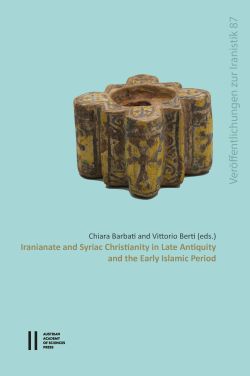
Iranianate and Syriac Christianity in Late Antiquity and Early Islamic Period, pp. 229-244, 2021/12/21
The very important and recent publication of N.A. Pedersen (ed.), Biblia Manichaica I. The Old Testament in Manichaean Tradition (Turnhout 2017) claims for a renewed perspective concerning the Biblical tradition in Manichaeism and stressing the achievements of the deputed scholarship (A. Böhlig, J.P. Asmussen, W. Sundermann, H.J. Klimkeit) to elucidate the Old and New Testament components of this multifaceted religion, blending Zoroastrian and Buddhist aspects as well. Then, the Christian side of this tra-dition displays a remarkable set of narratives, embedded into a specifical genre of the Manichaean hymnology (the Parthian Crucifixion Hymns), or within an Apocryphal line of Gospels and into an apocalyptic stratum of texts and imageries. After a brief survey of a few samples dealing with this topic, re-sponding to a consistent part of Mani’s cultural heritage within the Baptist community, I shall take into account a particular employ of Gospel quotations in Mani’s Šābuhragān. The Šābuhragān is a noteworthy piece of conceptual translation with a high missionary target, to render in a Zoroastrian mold a narrative related to Mani’s cultural background of his Jews-Christian and Gnostic formation. In the way of previous seminal studies, I shall try to con-firm not only Mani’s cultural strategy of religious translation and adaptations, but also his main concern for sustaining and hospitality of his holy commu-nity, namely the Electi, charged with a pious task of ascetical behaviors for salvation.